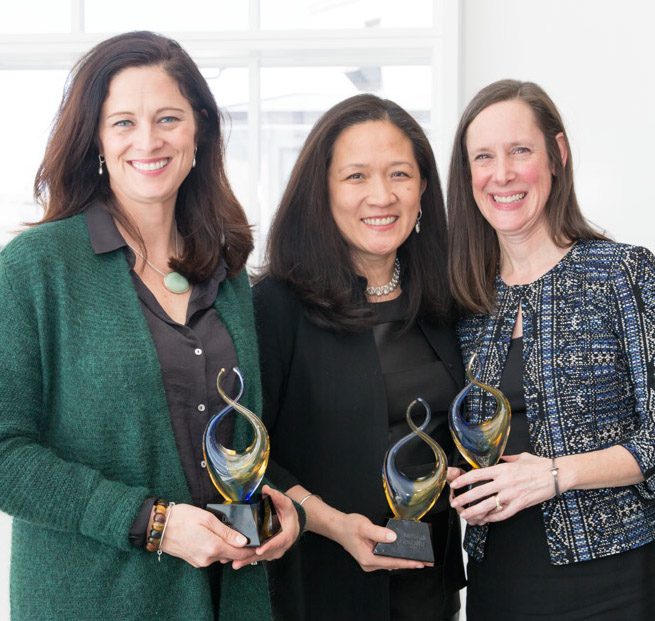The Diversity & Flexibility Alliance’s Spotlight on Flex showcases professionals from member organizations who exemplify personal and professional success while working a flexible schedule. Their stories illustrate the long-term benefits that flexible schedules offer to both individuals and organizations.
PAST SPOTLIGHTS
If you are a professional working a flexible schedule and would like to share your story in an upcoming Spotlight on Flex, please contact Angela Whitehead Quigley.


Spotlight on Flex – Rebecca Springer
The Spotlight on Flex showcases professionals from member organizations who exemplify personal and professional success while working a flexible schedule. Their stories illustrate the long-term benefits that flexible schedules offer to both individuals and organizations.
For February 2018, we are pleased to share insights from Rebecca Springer, Partner, Crowell & Moring (Washington, DC).
Diversity & Flexibility Alliance: How have you made flexibility a priority and a success through your schedule?
Rebecca Springer: I started at Crowell & Moring as a first year associate after I graduated from law school. I knew I wanted to be in DC, and I knew I wanted to focus on labor and employment law. However, I also started at the firm thinking I would stay for a few years, make enough money to pay off my student loans, grow my legal experience, and then leave to figure out what I really wanted to do! No one was more surprised than I was when the firm turned out to be a great place for me to build a career. I’ve been fortunate to work at a great firm, with great people, do really interesting work, and have a fulfilling career, all the while being able to get married, have a family, and enjoy other outside interests like performing in a local singing group.
While I was mid-career, I thought about leaving because I wasn’t sure if I wanted to stay on the partner track. At the time, I thought the only alternative was to leave the firm and pursue something else. I talked with my practice group leaders, and they made it clear they wanted me to stay – my trajectory didn’t have to be a traditional path to partnership.
Spotlight on Flex – Danielle Katzir
The Spotlight on Flex showcases professionals from member organizations who exemplify personal and professional success while working a flexible schedule. Their stories illustrate the long-term benefits that flexible schedules offer to both individuals and organizations.
For January 2018, we are pleased to share insights from Danielle Katzir, Partner, Gibson Dunn (Los Angeles, CA).
Danielle Katzir: I think it comes down to flex is not a one size fits all – not for the individual or the job – and flex isn’t static over the course of your career. I’ve been on some type of flex time arrangement for seven years now, but my targeted hours have varied, as needed, to best meet my needs and goals, those of the firm, and my clients. When my kids were younger, I wanted to spend more time at home with them working remotely. Now with three active toddlers, many mornings I can’t wait to jump in the car to clear my head, and I’m in the office every day. Flex is a two way street – it’s best if you’re as flexible with the job as you want the job to be with you. It’s about creatively defining flexibility and frequently looking at it from a more macro level; it’s not necessarily how predictable my day, week, or month is. Our industry often lacks this kind of certainty. It’s more about asking myself, “What do I want to achieve, professionally and personally, this quarter or year? The next 3-5 years?” Start at that point and backwards-engineer the workload to make those goals achievable in a timeframe that works for you. Be willing to revisit and re-evaluate that plan frequently.
Spotlight on Flex – Indira Sharma
The Spotlight on Flex showcases professionals from member organizations who exemplify personal and professional success while working a flexible schedule. Their stories illustrate the long-term benefits that flexible schedules offer to both individuals and organizations.
This month, we are pleased to share insights from Indira Sharma, Counsel and Chair of the Diversity & Inclusion Committee, Saul Ewing Arnstein & Lehr LLP (Baltimore, MD).
Indira Sharma: I started working at Saul Ewing right after I graduated from law school in 2006 and was on a full time schedule from 2006-2010. After I had my first child at the end of 2009, I returned to work reduced hours at 65 percent for about a year before transitioning to 70 percent reduced hours. I don’t have a set schedule; as it is with the practice of law, it just depends on the day. Instead of focusing on what days I’m in the office or not, I focus on making myself available. When there’s extra time, I spend it taking care of more things at home for my family and the community.
It’s been trial and error to get to this point. At first I thought I would take a certain weekday off, but I realized it wasn’t realistic as a litigator. So when there are family commitments, I work around them just as I would work around a deposition schedule. There are times where I’ve had to bend for work and times when I’ve had to bend for my personal life – it just depends what’s more important at the moment.